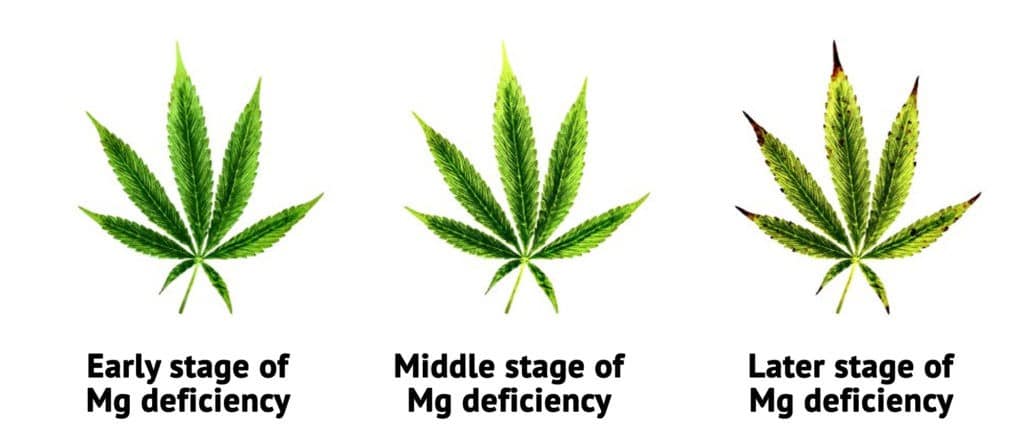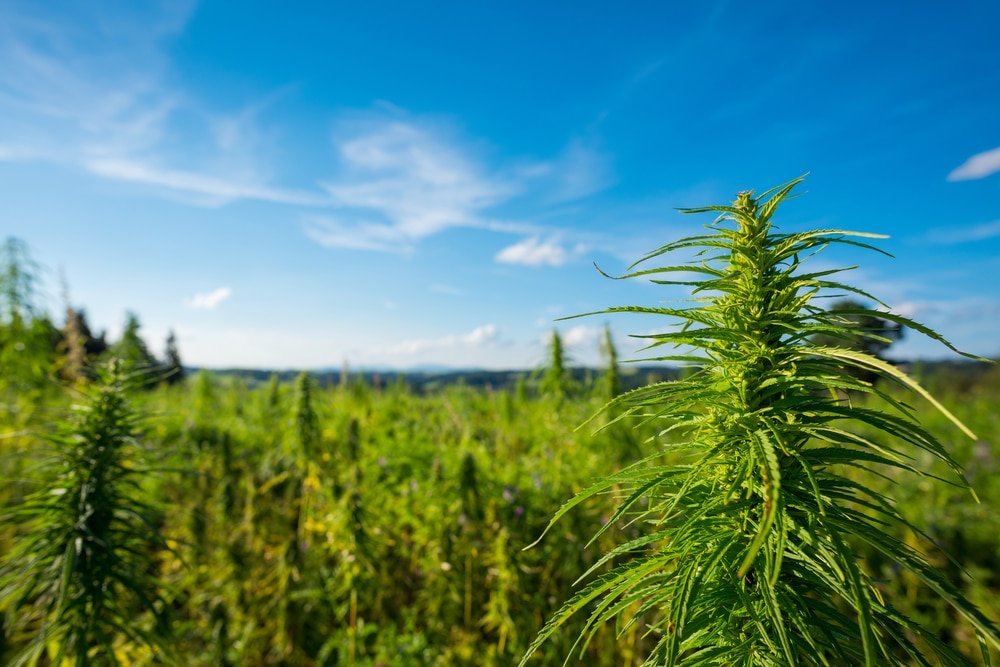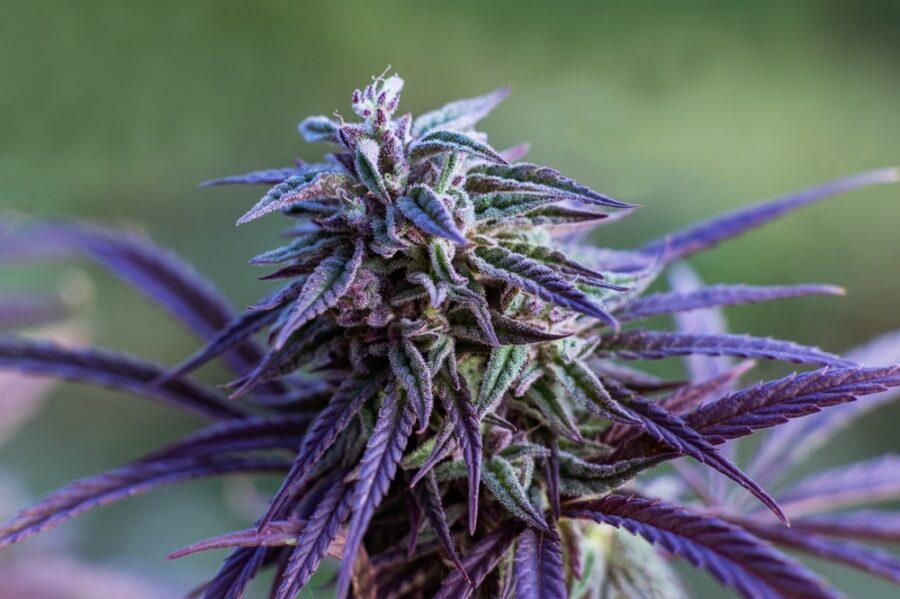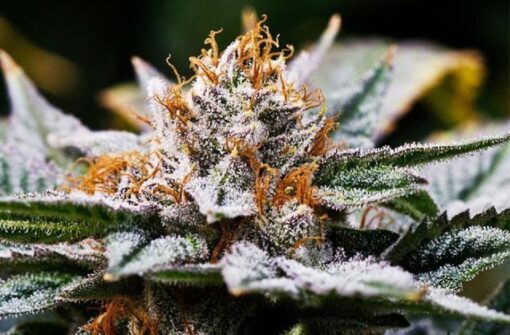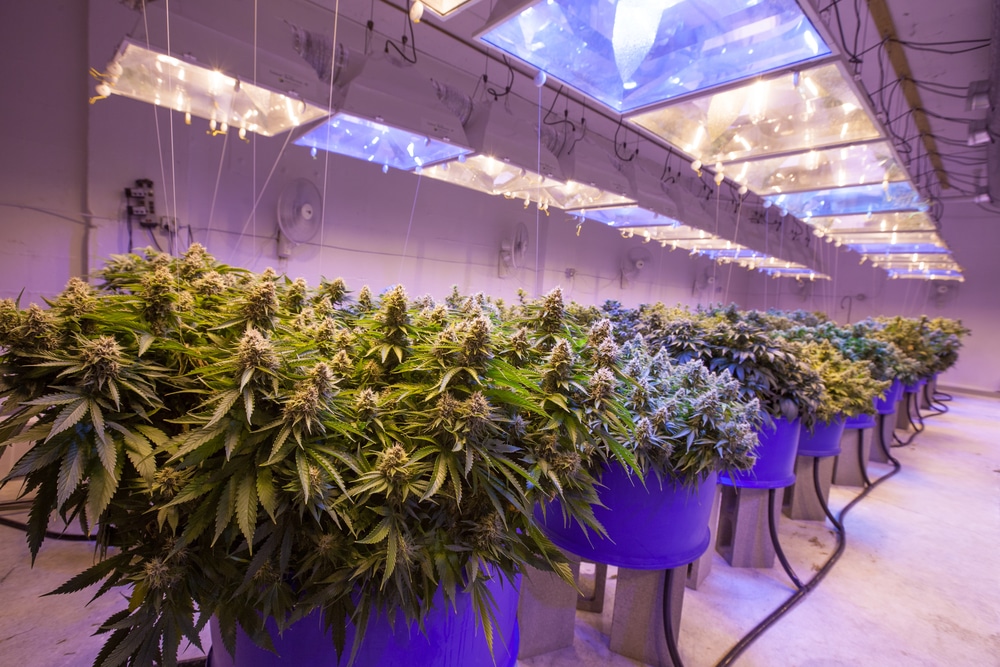No products in the cart.
Marijuana Education
Our Guide On Magnesium Deficiency Weed | Troubleshooting
Magnesium deficiency is a common nutritional deficiency in marijuana plants. And as a grower who is seriously profit-oriented, every deficiency or defect in your plants is an immediate concern. Nonetheless, most growers are not aware of the challenge posed by magnesium deficiency. Magnesium deficiency in weed plants can lead to issues as little as yellowing of plant leaves to issues as serious as plant death. So, how do you identify magnesium deficiency and how is it corrected? Read on to find out.
- Understanding magnesium defects
- Causes of magnesium defects in marijuana
- Symptoms of magnesium defects
- Differentiating between cal-mag and magnesium defects
- Differentiating between magnesium defects and other nutrient defects
- How to correct magnesium defect
- How to avoid magnesium defects in marijuana
Understanding magnesium defects
Apart from the three major nutrients required for the proper growth of a healthy marijuana plant, there are other trace nutrients without which the plant will struggle to survive. Magnesium is one of these major trace nutrients and a defect or deficiency of magnesium tends to spread quickly. Generally, magnesium defects show the grower that his marijuana plants are not getting the required magnesium from the water used in watering and the soil. Seeing how essential magnesium is, the result tends to be catastrophic.
Causes of magnesium defects in marijuana
There are many causes of magnesium defects in marijuana. Some soil options have trouble absorbing minerals such as magnesium and calcium. Therefore, magnesium defects are common among growers who use soil alternatives such as coco peat. Where the underlayer retains only a little quantity of this essential mineral, it can very quickly result in marijuana magnesium defects. Iron defects are also common among growers who use such alternatives.
Among outdoor growers, magnesium defects become a common occurrence where the soil is naturally magnesium deficient. Some areas in the world have soils that are rich in magnesium due to rock formations which occur naturally and frequently and therefore have soils and underground waters which are rich in magnesium, some other areas have high concentrations of other minerals such as fluoride and calcium but little or no magnesium. Where marijuana is grown in such areas, there are bound to be magnesium defects in the plants except in cases where the grower is aware of such deficiencies and takes steps to correct them.
While is it is wise to try to prevent this defect, the grower should take extreme measures to ensure that his soil actually lacks magnesium before adding additional nutrients as where the grower is wrong and has magnesium soil after adding the extra magnesium nutrient, he risks his plants suffering from magnesium toxicity. Where a grower uses a hydroponic farming method with water that has undergone reverse osmosis or RO, he also runs the risk of growing magnesium deficient marijuana as the RO filters remove even trace minerals like magnesium.
Symptoms of magnesium deficiency weed
Yellow leaves
Since magnesium is essential for photosynthesis, the plant begins to draw magnesium from older plants to enable to new ones develop to make up for the lack of magnesium in the soil. Therefore, magnesium deficiency begins to manifest in older lower leaves beginning to yellow.
This begins with veins of the leaves turning yellow followed by the areas surrounding those veins. Brown spots resembling burn marks may also begin to appear on the leaves. After the leaves become yellow, the tips of the leaves become brownish in color and burn. The rest of the plant may become crackly and dry. Be this as it may, another symptom of magnesium deficiency may be extremely green leaves instead of yellowing. This is so because when the plant notices the deficiency in the soil, it begins to absorb as much of the leftover magnesium to the leaves as it can which can lead to the leaves acquiring an unnaturally green color.
Red stems
While this is a less common symptom of magnesium defect, it is not impossible. This is easily explainable as one of the symptoms of magnesium defect is discoloration of the leaves of the marijuana plant.
Differentiating Between Cal-mag and Magnesium defects
Magnesium and calcium have certain characteristics that make them interact with themselves directly. In high concentrations, calcium prevents the marijuana plant from absorbing magnesium. This happens with magnesium in relation to calcium too. In another circumstance, where there is inadequate calcium, the plants cannot use the magnesium available in the water and soil. Consequently, a shortage of calcium can lead to a magnesium defect.
This interaction between magnesium and calcium has led to what growers call a cal-mag. Cal-mag interactions can therefore lead to a plant showing classic symptoms of magnesium deficiency which cannot be treated by additional magnesium application as it results in a nute or nutrient block.
To avoid nutrient toxicity by over-application of a nutrient that is not missing, a grower has to be able to identify and distinguish if what he’s experiencing is a cal-mag or a magnesium deficiency.
Since a deficiency in iron, calcium, and magnesium show the same primary symptoms, it is usually difficult to spot a defect plainly for what it is. Nonetheless, their shared symptoms are as follows; the leaves begin to yellow which is known as chlorosis, and to brown which is known as necrosis. The leaves also begin to claw (their tips of the leaves begin to bend downwards. The disadvantage of all this twisting and turning is that it stunts plant growth.
Differentiating between magnesium defects and other nutrient defects
As discussed in a cal-mag above, a magnesium deficiency weed usually looks uncannily like other defects which affect marijuana plants. With experience, a grower becomes adept at differentiating a magnesium defect from a defect in other nutrients. Having discussed magnesium defects, we’ll discuss other defects.
Iron defects also show in the yellowing of leaves. However, unlike magnesium defects in which the leaves turn yellow from downwards, iron defects have the opposite effect as it turns the leaves yellow from upwards.
Nitrogen defects in marijuana are common because it is an essential mineral for the growth of marijuana. Where there is a lack of nitrogen in the soil, the marijuana plant begins to yellow from the middle downwards. This is so because as the plant notices the lack of nitrogen, it sends what is left of the mineral to the topmost part of the plant which is still growing to remove all the minerals from the lower levels.
Where there is a shortage of phosphorous, the marijuana plant becomes frail and begins to lose color from the edges on all angles of the plant. The base of the plant may also become purple or blue in color while clawing is also a common symptom.
Where the marijuana plant suffers from a potassium defect, the plant goes through a sudden and unexpected growth spurt after which the bottom leaves begin to get brownish and fall off.
These defects all have a marked difference from the magnesium defect symptoms discussed above which makes identifying and correcting them markedly easier.
While these leaves of defects are not in any way conclusive, they are the most common.
How to correct magnesium deficiency weed
Now that the defects and their symptoms have been understood and are able to be spotted, how does one correct a magnesium deficiency? This is almost the easy part. The following steps should be followed for best results;
- The under layer of the soil should be flushed with pH-neutral water of about 6.0%
- A mix with the correct pH levels should be prepared
- A trusted magnesium supplement should be added to the mix prepared in number two above
- The marijuana plants should then be watered with the mixture.
Alternative for hydroponic farmers
- The growing system should be flushed with water that is pH neutral.
- A pre-formulated base rich in magnesium is then added to the growing system.
How to avoid magnesium deficiency weed
We’ve discussed everything from what magnesium is to its importance in this article. It is supposed that this has added much-needed experience to that of the reader who now knows how to deal with any magnesium-related issue effortlessly.
To avoid having to deal with magnesium problems even in magnesium-rich areas, growers should endeavor to purchase their seeds from reliable and trusted sources to avoid having to deal with such issues with their marijuana plants.


